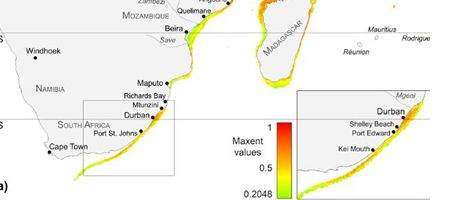While sea level rises caused by global warming threaten islands, a tiny marine creature appears to be riding to the rescue, spreading rapidly through the oceans and stabilizing coastlines.

There are about ten thousand species of the tiny shelled creatures known as foraminifera in our oceans, most smaller than a grain of sand. But they can have a big effect.
“Foraminifera are ecosystem engineers,” says Professor Martin Langer of the University of Bonn. “With their shells, these protozoa produce up to two kilograms of calcium carbonate per square meter of ocean floor. This often makes them, after corals, the most important producers of sediment in tropical reef areas.”
And, says the team, one of these varieties – Amphisteginid foraminifera – is increasing its range. Found along the 9,000 kilometer-long coastline off Somalia, Kenya, Tanzania, Mozambique, South Africa, Namibia and Angola, it appears to be spreading at a rate of about eight kilometers per year.
“The range of Amphistegina is essentially governed by ocean temperature and nutrient content of the waters,” says Langer.
Amphistegina needs a water temperature of at least 14 degrees Celsius, and climate models indicate that it will have spread almost 300 kilometers closer to the poles by 2100.
And, unlike corals, Amphistegina doesn’t have a problem with ocean acidification.
“Amphisteginids and other foraminifera are increasingly taking over calcium carbonate production from corals, thus occupying their ecological niche. This is a role reversal in process,” says Langer.
Amphistegina’s ability to rapidly expand its territory under changing climate conditions, and along with its prolific production of calcium carbonate, will make them key ecosystem engineers for the stabilization of reefs, beaches and islands, says Langer.
“Amphisteginids and other foraminifera will rapidly spread in the decades to come and will contribute substantially to future tropical reef island resilience,” he says.






